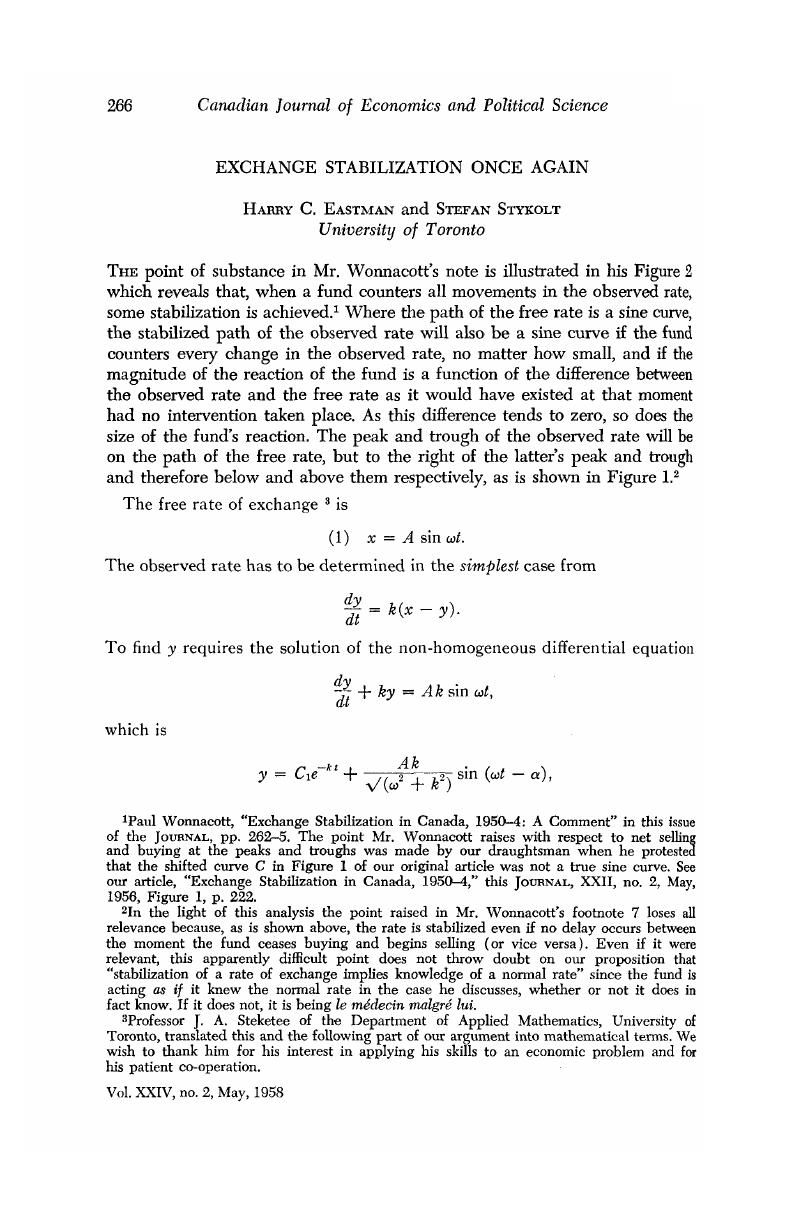No CrossRef data available.
Published online by Cambridge University Press: 07 November 2014

1 Wonnacott, Paul, “Exchange Stabilization in Canada, 1950–4: A Comment” in this issue of the Journal, pp. 262–5.Google Scholar The point Mr. Wonnacott raises with respect to net selling and buying at the peaks and troughs was made by our draughtsman when he protested that the shifted curve C in Figure 1 of our original article was not a true sine curve. See our article, “Exchange Stabilization in Canada, 1950–4,” this Journal, XXII, no. 2, 05, 1956, Figure 1, p. 222.Google Scholar
2 In the light of this analysis the point raised in Mr. Wonnacott’s footnote 7 loses all relevance because, as is shown above, the rate is stabilized even if no delay occurs between the moment the fund ceases buying and begins selling (or vice versa). Even if it were relevant, this apparently difficult point does not throw doubt on our proposition that “stabilization of a rate of exchange implies knowledge of a normal rate” since the fund is acting as if it knew the normal rate in the case he discusses, whether or not it does in fact know. If it does not, it is being le médecin malgré lui.
3 Professor J. A. Steketee of the Department of Applied Mathematics, University of Toronto, translated this and the following part of our argument into mathematical terms. We wish to thank him for his interest in applying his skills to an economic problem and for his patient co-operation.
4 Eastman, and Stykolt, , “Exchange Stabilization in Canada, 1950–4,” 221.Google Scholar
5 Kindleberger, C. P., “Exchange Stabilization Further Considered: A Comment,” this Journal, XXIII, no. 3, 08, 1957, 408.Google Scholar
6 See Eastman, and Stykolt, , “Exchange Stabilization in Canada, 1950–4,” 223–5.Google Scholar
7 This Journal, XXIII, no. 3, Aug., 1957, 404–8.